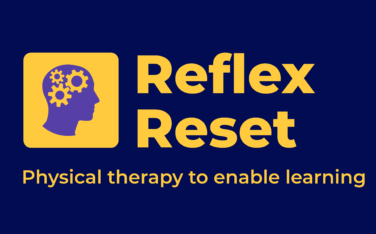What is the TLR?
The TLR is activated by the position of the head, forwards or backwards, causing flexion or extension in the body. For the TLR in flexion, as the head moves forwards to the chest, his arms bend into his body and his hips flex and knees bend, as his legs are drawn into his tummy. For the TLR into extension, the baby’s head is allowed to drop below the level of his spine. His back will arch up, his shoulders retract and his arms straighten and move back away from his body.
What is the purpose of the TLR?
The TLR develops in utero, as seen by the flexed position of the baby in the womb. The TLR into extension is present at birth and plays an active part in a normal delivery. Its purpose in the newborn is to provide a mechanism for altering muscle tone.
 The new-born infant is a very flexed and curled up little person but over the first few weeks of life, extension/straightening out occurs in the hips and legs. The first area to come ‘under control’ is the head and the first movement the baby will make voluntarily is lifting his head from prone (when he is on his tummy). The more that head control in extension is established, the more the TLR in flexion is integrated. By the time there is no head lag (dropping back of the head) when the baby is pulled up into sitting – at about 4 months – the TLR in flexion should be inhibited.
The new-born infant is a very flexed and curled up little person but over the first few weeks of life, extension/straightening out occurs in the hips and legs. The first area to come ‘under control’ is the head and the first movement the baby will make voluntarily is lifting his head from prone (when he is on his tummy). The more that head control in extension is established, the more the TLR in flexion is integrated. By the time there is no head lag (dropping back of the head) when the baby is pulled up into sitting – at about 4 months – the TLR in flexion should be inhibited.
The TLR into extension takes longer to be absorbed because it has a role to play as each new position is mastered by the growing and developing child. The learning of these postures places a (normal) stress on a child until the new position is firm and reliable and so hints of the TLF may be present fleetingly. By the time a child is three and a half, the TLR should be integrated in both its forms.
What happens if the TLR is retained?
There are two main effects of a retained TLR – a vestibular effect and that on tone.
The vestibular effects may present as motion sickness, poor balance, visual-perception problems (the ability to correctly interpret information received through sight), issues with spatial concepts (complex cognitive skills which allows a child, for example, to know: right from left, up/down, on/in, was from saw, how to fill a sheet of paper with information). Specific visual problems may include a lack of near-point convergence and figure-ground effect (the ability to work out which is the object and which the background). The child may also have poor sequencing skills and a poor concept of time.
The effects on tone are dependent on which TLR is retained. TLR in flexion or forwards may cause hypotonus – lower than normal tone which can manifest as weakness, poor posture and slumping. A retained TLR in extension may cause hypertonus/ increased tone and presents as the lack of smooth movement or toe-walking.
